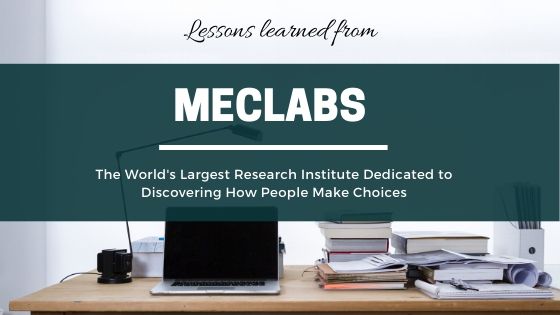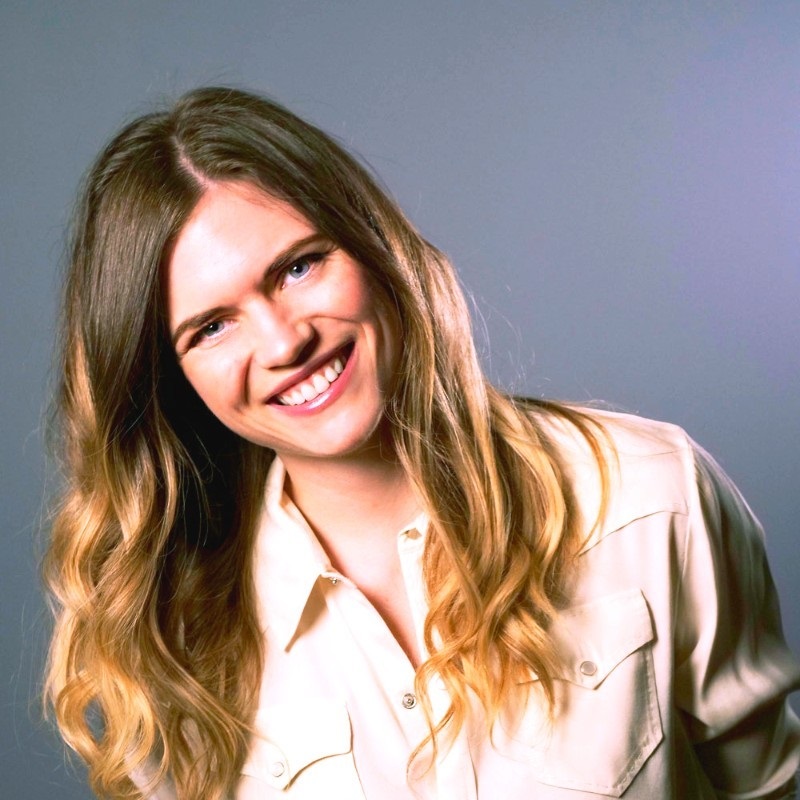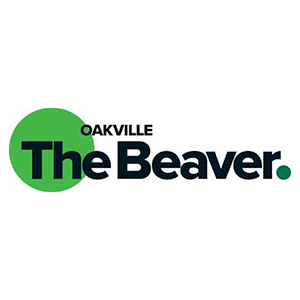
This post was originally called How to Run a Kick-Off Meeting Like Dr. Flint McGlaughlin of MECLABS and was republished on Marketing Sherpa.
Question: How would you run a kick-off call with a client if you were a master of psychology and persuasion?
That’s what I wondered before today’s meeting with Dr. Flint McGlaughlin.
What would he be like? (Spoiler: charming.)
How tense would it be to have my copy exposed to the founder of conversion optimization?
But mostly, what would I learn?
The time my client hired MECLABS…
This all started a few weeks ago when my client asked if I could hop on a call. It was impromptu and both owners were on screen.
We’d been back and forth optimizing their landing pages since December… pages that drive 90% of the business of a mid-sized firm. Those pages have generated a lot of revenue, but they’re under pressure to perform.
We talked about bringing in a CRO agency to run tests. My client went one further and hired MECLABS.
This is something like recommending a client get a video made…
And they hire Martin Scorsese.
MECLABS is the luxury brand of CRO services
To put this opportunity in perspective:
You could pay Ivy League tuition fees for a term… or you could work with Flint for a couple of days.
Which is what I’ll be doing with my client’s team at the MECLABS campus in Jacksonville this March.
MECLABS and Flint are synonymous with conversion optimization. Long before I even knew the internet existed, Flint was using the web to study the process of human decision making.
He’s been running conversion experiments since the 90s.
CROs tell me that when Marketing Sherpa first published in the mid-aughts, it was a revelation.
And that’s why clients line up to pay MECLABS a premium.
I don’t want to speak out of turn here, but their day rate is more than the monthly retainer for most CROs.
High-ticket sales copywriting in action, with Flint McGlaughlin
Like I said, hiring MECLABS is no small investment.
But from the very first kick-off call, it’s clear why Flint is so good at selling premium services. His kick-off call was a masterclass in high-ticket sales.
And in-person sales are like copywriting in action.
The very beats he hit in the call are the beats we need to hit in sales copy when we’re selling high-ticket services.
You might be thinking, “But the sale was already made. How is the kick-off call a sales call?“
I would say two things:
- The sale is never finished. You’re always upselling, cross-selling, selling the buyer on referring you to others.
- Before and after any sale, you’re always selling against buyer’s regret. Anytime a client has made an investment – especially a substantial one – you’re selling belief that it was the right choice.
So, have no doubt. This was a sales call.
And if you write copy for high-ticket services…
There’s a lot to learn from the sales techniques Flint employs. You can take these very techniques and use them to optimize your own sales copy and sales call scripts right away.
Principles of selling high-end services (as demonstrated by MECLABS)
I’m going to run through the techniques I saw in the call and how these align with principles of selling high-ticket services via copy and in live calls.
Build rapport, build egos
People need to feel safe with us to say yes to the sale.
Sure, they need to know you’re the authority – and we’ll cover that – but they also need to keep their egos intact.
Flint was patient, interested, charming…
Instead of tearing down our pages, he pointed out what was right and where he sees opportunity.
Your buyers also need to feel like they have what it takes to get next-level results with your premium service. Especially with services, confidence is key.
After all, your buyers aren’t getting a product in a box. The value they derive from your services largely depends on how they implement.
So, build their confidence, like Flint.
Anchor your pricing
After the intros, Flint raised the value conversation. He talked about the payoff my client could expect.
Flint said, “I’m going to talk in big, round numbers here.” And then he referred to realistic conversion lifts of 10% or more. “What would that be worth to you?” he asked.
And then Flint showed how my client could recoup the costs of MECLABS services with a reasonable 10% increase in conversions.
Smart. Let’s anchor our pricing like Flint more often.
Anchoring pricing gives your prospect a frame of reference. And that’s essential when your services are truly high-end.
How can you anchor the price of a high-ticket service in your copy?
Tie it to what your buyer really values.
If they really value time, anchor the cost in the value of the time they’ll save.
If they value years of stress-free living, anchor it in that.
If they value revenue growth, show how your service delivers an ROI.
Demonstrate authority in multiple ways
After the value question, Flint spoke of how he worked with Verizon for four years, for a fee of $1M per month and was able to measure the financial upside of such a huge investment.
What’s happening here?
Aside from further anchoring the price by setting a high reference point…
Flint was using impressive proof to 1) make the client’s investment seem small and the opportunity incredible, 2) generate excitement around outcomes, and 3) reinforcing authority.
But Flint didn’t just drop this one reason to believe.
He wove demonstrations of authority throughout the call.
For example:
- “We’re an institute”
- I raised $138M for research
- We ran 20k experiments
- We have a protocol
- Multiple case studies with lifts in conversion
- “Yesterday I ran a meta-analysis of hundreds of experiments on CTAs”
And the naturalness! The humility! It was a masterclass. Chalk that up to Southern charm… and a doctorate in divinity at Jesuit school.
We can never drop our authority in a sale – even while we’re warm, empathetic, collaborative.
One, because clients have to learn to trust the experts fully – at every step – or they can inadvertently sabotage the efforts and the lack of trust becomes a self-fulfilling prophecy.
Two, because the buyer needs a “preponderance of evidence” as Flint says, to say yes to the sale.
Prove scarcity
We’ve all seen fake scarcity.
It’s in the evergreen countdown timers for offers that only expire until we get back into the funnel.
It’s in the faux-casual social post claiming, “only so much time left on my calendar – get in while you can”.
Flint said, “I’ll only take two to three more partners this year. Even though we get hundreds of inquiries per month.”
High-ticket services are almost always – by definition – scarce. Show just how exclusive your service is throughout your sales copy.
Scarcity also works well with existing clients – again, because buyer’s regret is real.
Even if buyers are fully paid up for a service, dissatisfaction is a risk. Not just because of our reputation as premium service providers or because of refund requests.
But also because those who fully buy-in get the best results. (Results that justify that premium service price tag.)
Strategically message your specialization
Flint said, “My entire life, I’ve studied one question. Why do people say yes?”
And then, he backed it up with a story about launching his lab when everyone else said no. More on that story in a moment.
What Flint delivered in maybe one minute was a) a single, powerful statement about what he does better than anyone else, and b) a story that delivers another reason to believe.
And he reiterated his specialization more than once in the call.
E.g. “The only thing I can do is bring what I’ve learned from 30 years of asking one thing: why people say yes.”
The more specialized your high-end services, the easier it will be to sell at a premium.
To write high-ticket service sales copy, be prepared to get very niche. Especially if you can tie that specialization to a highly-desirable outcome.
Sell with your story
Storytelling has gotten a lot of hype, thanks to Story Brand… and there’s good reason to tell stories in sales and marketing.
However – and this is a huge caveat – not all brand/founder/origin stories should be told.
When we talk about ourselves and our stories, we have to crystallize the most essential selling information that clients should take away.
Let’s get back to Flint’s story and how it supported the sale.
In the bones of his MECLABS creation story is the Hero’s Journey. (I talk more about it in this post on the challenges of writing our About stories.)
The Hero’s Journey is your story of how you were called to a purpose, struggled, overcame…
And as a result of that journey, you know exactly how to help your clients struggling with the very same challenges.
In Flint’s version of the Hero’s Journey:
- He had a mission: To use the internet to understand why people say yes.
- He faced adversity: Cambridge wouldn’t invest. Oxford said no. (These were the early days of the internet and no one else saw the potential of the internet as a living lab.)
- He overcame: So, Flint self-funded… and pioneered the CRO industry.
- Now he helps others: Because of that struggle and heroic effort, Flint is the ultimate guide.
What story of struggle and victory can you tell in your copy to sell high-ticket services?
Set expectations
Conversion rate optimization can create unrealistic expectations.
But any good CRO will tell you that not every test wins. It’s an iterative learning process where you get progressively closer to the truth of what converts.
Flint needed to set that expectation in a memorable way. (Because people will selectively remember.)
So, he showed two variations on a landing page and asked each of us to guess which won.
Turns out, the control (the client’s original page) won. MECLABS’ test page showed a 41% decrease in conversions.
But it was just the first test.
MECLABS took what they learned from the first test to create a second test, which generated a 74% lift over the control.
While telling this story, Flint touched on the process MECLABS patented, so he was selling the process, educating (making us better clients) and setting expectations all with one demonstration.
If it takes time to get results from your high-ticket services, how can you keep them excited about the end result (hello, 74% lift!) and still manage expectations?
One-up them with your goals
Any client engagement with fuzzy goals is dangerous.
And by goals, I don’t mean outputs. It’s tempting to talk about the things we’ll get done. What we’ll hand over. The website, the funnel, the brand book.
But in the kick-off call we should focus on goals in terms of the value we’ll create.
In Flint’s case, the three goals he established are:
1) to generate an ROI on the engagement,
2) to transfer knowledge to our team so we can learn the system to drive growth,
3) to build a model of the customer’s mind, so we can keep getting higher conversions after the engagement with MECLABS wraps up.
But Flint first asked what the client’s goals are to make sure they’re aligned. That’s key. We need agreement on goals before moving forward.
From a sales perspective, the fact that Flint had three goals where the client had one (ROI) is part of the magic. It conveys a level of commitment and vision higher even than ours.
Essentially, “Great, we’re aligned on this one simple goal, and we’ll 100% achieve that. But I want more for you.”
In your sales copy, make sure you define the goals of the high-end service. In other words, make a clear and specific promise.
Be surprising
A bit of the unexpected shakes people up.
Dropping counterintuitive information also reinforces your authority. It makes us aware of the wider gap between what we know and what the expert knows.
Flint, for example, showed a control page that ticked off best practices against a test page that wasn’t obviously better. But the test page won.
(Most of us in the business of optimization are accustomed to this – we don’t know until we test. But most clients have been trained to trust opinions and preferences.)
The effect? He’s destabilizing our beliefs, so he can reshape them.
One of my favorite techniques in sales copy is from Ry Schwartz’s sales page copywriting framework. To “coach the conversion”, he says, you have to address the beliefs that are holding them back from saying yes.
What beliefs do your prospects have that could stop them from saying yes? Address and shift those beliefs head-on in your sales copy.
Don’t oversell the process
We may be in love with our process…
And our clients may need to know we have a process…
But the process isn’t what sells.
Flint spent 90% of the call on what I’d categorize as persuasion and indoctrination – everything that goes into nurturing the sale.
Only at the end did he touch on methodology.
If you’ve ever seen the MECLABS materials, you’ll know they fall into the category of what Joanna Wiebe might call “sciencing the sh*t out of it”.
Case in point:
“The Conversion Sequence Heuristic is part of a patented, repeatable methodology (patent number 8,155,995) developed by Flint McGlaughlin, CEO and Managing Director, MECLABS Institute, based on years of testing and research of real product and service offers presented to real customers.
C = 4m + 3v + 2(i-f) – 2a“
They have a serious process.
And that sort of proprietary process wizardry has a place – it’s just that the right place is later in the sale when people are looking for reasons to say “no”.
That’s exactly how Flint uses it.
He doesn’t lead with the mad scientist equations and the heavy process. It’s just there, in the close, showing you he’s not ad-libbing here.
When you’re selling high-ticket services, be like Flint.
Let the process be a proof point that seals the deal, but isn’t the main attraction.
If you make the client work, do it like Flint
Flint has a client questionnaire. But he immediately framed it in terms of client benefits: “I don’t want to waste your time, so I want to have this information on hand.“
If you’re selling high-ticket services, you invariably need to qualify prospects. Many coaches and program creators have an intake form that pre-screens potential buyers before the sales call. Copywriters do as well.
This is just a practical necessity because we can’t spend all day on sales calls.
But pre-screening also builds a sense of exclusivity.
And people who spend time, spend money.
So, in theory, if I spend time filling out a questionnaire, I may be more likely to say yes to the program.
Done right, you can get clients to sell themselves by answering strategic screening questions.
But if you make your prospects work, tell them why.
You might say something about how you want to make sure they’re in a position to get a high ROI, so you first need some details.
And you also need to keep in mind whether the work you’re asking of clients to access your premium services is aligned with a premium experience. Is this something a high-end client would be willing to do? At what stage?
Make the money secondary
This is about both motivation and timing.
To authentically sell high-ticket services, you need to stay connected to your deeper mission. (Something Blair Enns talks about – more on this, below.)
You are on a mission. That’s why you’re a premium service provider with a unique specialization.
You can only achieve that mission if you charge enough to realize that mission with the right clients.
But this is also about timing.
The money needs to be raised, but not until the high-ticket service has been well and truly sold.
If you keep an eye on sales copy for high-ticket services, including coaching and programs, you’ll notice the pricing isn’t always revealed in the sales copy.
The copy might only suggest an order of magnitude (“this is a five-figure investment”), but details of the investment are only revealed in the sales call.
If you’re selling a premium service, how do you pull off this pricing reveal gracefully?
It’s all about building the relationship, first.
Flint invested in building that rapport, trust, authority, and excitement around the outcomes upfront…
And when it came time to talk about investing more with MECLABS, he framed it in terms of the value he wanted for my client.
You can do this on a sales page or in a multi-step sales funnel for your high-ticket services. The higher the price, the more sales messaging needs to precede the conversation about money.
More lessons from MECLABS coming soon
All of this, just from the kick-off.
Next up, two days with Flint.
Five weeks to take his courses.
Months, no – years – of putting in practice what we learn.
There will be a lot to share.
Hit me with any questions you may have. And watch this space for the story to unfold.
Want to sell more high-ticket services?
I’ve been immersed in the work of Blair Enns of Win Without Pitching.
And his voice no doubt shaped what I noticed in this call. In Blair’s books and his podcast, Blair sets out a protocol for truly leading client engagements.
Included in these tenets:
- Replace presentations with conversations
- Prefer value-based pricing
- Frame pricing against other, higher-end engagements
- Position yourself as an expert (“the world doesn’t need another generalist firm”)
I’d strongly recommend Enns’ materials if you’re a premium service professional looking to command higher fees.





























